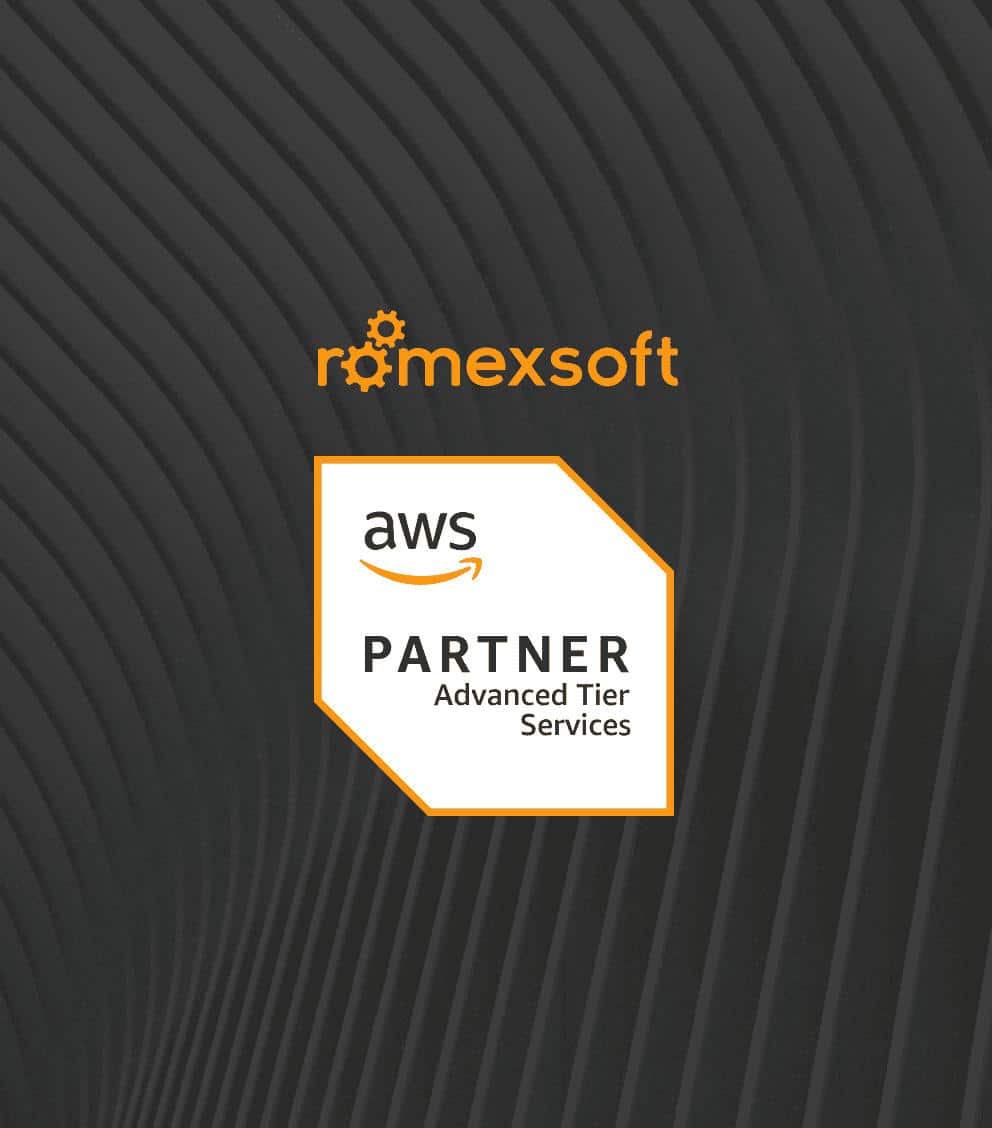End-to-End Serverless Application Development Services
Serverless application development services enable building scalable, event-driven applications without the overhead of server management.
Serverless App Development Services We Provide
Our serverless solutions encompass the end-to-end creation of cloud-native applications. The scope covers designing event-driven architectures, implementing scalable backend logic, and integrating managed cloud services to handle compute, storage, and messaging requirements.
Microservices Architecture
Event-Driven Data Processing
RESTful APIs and Web Applications
Real-Time Media Transformation
Chatbots and Voice Assistants
Automated Backups and Scheduled Tasks
CI/CD Automation
IoT Backend Processing
Serverless Development Case Studies
Explore how our serverless implementations translate best practices into measurable delivery and impactful results across our customers’ development journeys.
What Our Clients Say
Why Choose Romexsoft as Your Serverless Application Development Company
We bring deep AWS expertise and a results-driven approach to serverless software development and consulting. Here are the key reasons to opt for Romexsoft.
Practical Proficiency
Our certified engineers possess a diverse portfolio of architecting serverless apps, migrating software to serverless platforms, and implementing third-party integrations. We act as a dedicated serverless application modernization company, migrating legacy software to modern serverless platforms. Having high-caliber professionals on board ensures our ability to hire top-tier serverless experts for augmenting your current engineering teams or building new ones from scratch.
Cold-Start Optimization
We analyze and minimize cold-start latency across serverless functions using provisioned concurrency, memory tuning, and efficient packaging. Our team ensures optimal runtime performance under real-world workloads, improving responsiveness, reliability, and user experience.
End-to-end Delivery
We cover all core development services you may need on your business journey, and we are proficient in every stage of the software development lifecycle. This ensures seamless integration of design, development, testing, and maintenance for everything we build. All end-to-end services from our offering guarantee high quality and effectiveness.
Need Help with Serverless Architecture?
Talk to our cloud experts to evaluate your app architecture, identify optimization points, and design a serverless strategy for your product.
Serverless Advantages That Deliver Impact
Adopting serverless architecture goes beyond technical convenience. Below are the key advantages that make serverless a strategic choice for modern application development.
Faster Time-to-Market
Only Pay for What You Use
Scale Automatically, Serve Consistently
Focus on Business Logic
Engagement Models We Offer for Serverless App Development Projects
We offer two flexible engagement models to align with your development needs
Dedicated
Team
Staff
Augmentation
Our Serverless Systems Development Process
We follow a structured serverless development process that ensures architectural clarity, reliable delivery, and runtime consistency.
We begin by identifying your business goals, user flows, and technical constraints. Our team maps out relevant event-driven patterns, such as user sign-ups, file uploads, or payments, and defines the high-level architecture, including microservices, APIs, triggers, data stores, and IAM roles. Based on your needs, we recommend FaaS, BaaS, or hybrid serverless models and select the right cloud provider and managed services.
We also address common multi-tenant architecture challenges by aligning compute consumption with tenant activity, ensuring better resource efficiency across shared environments.
Then we choose the optimal programming languages and frameworks along with DevOps tooling to streamline delivery. Infrastructure is defined using IaC, managing everything from deployment pipelines to triggers, IAM policies, and VPC configuration via tools like Terraform or AWS CloudFormation.
Dynamic tiering models are built into the architecture so that service providers can offer differentiated performance and isolation levels across service tiers, without incurring high operational costs.
Our engineers build and deploy event-triggered serverless functions with well-defined operational workflows, error handling, and retries. APIs are exposed using REST, GraphQL, or WebSocket via API Gateway to support dynamic client interactions.
We implement unit, integration, and end-to-end testing using local emulators and cloud-based tools, simulating events and cold starts. CI/CD pipelines are automated to support safe deployments (blue-green, canary) and enable fast rollbacks in case of failure.
By removing the need for manual configuration, we enable faster release cycles, helping product teams ship updates more frequently and with less disruption to end users.
Post-deployment, we enable full observability using tools like CloudWatch, Datadog, tracking logs, metrics, and traces. We continuously optimize performance by tuning function settings, reducing latency, and identifying cost-saving opportunities. Ongoing support covers patching, upgrades, and incident handling as needed.
Technologies We Use for Serverless App Development
Serverless Development FAQ
Serverless development is a cloud computing model where applications are built and run without the need to manage the underlying server environment. In this model, the cloud provider automatically handles supplying and servicing. The focus is on writing code for the software, while the platform dynamically allocates resources as needed.
Despite the name, servers are still involved, but they are fully managed by the cloud provider, removing the need for manual intervention by the user.
Conventional App Development requires taking care of physical or virtual servers, ramping up computing capacity manually, and doing server upkeep. In this model, you must allocate enough server strength to handle peak loads, which can lead to underutilization during low user activity periods, increasing operational costs.
Serverless App Development, on the other hand, eliminates the need to manage servers. The cloud provider effortlessly handles infrastructure provisioning. Developers focus solely on writing code, while the platform allocates resources demand-drivenly. This approach reduces operational overhead, optimizes costs with a pay-per-use model, and allows applications to scale on its own, providing more agility and flexibility in development.
Consider serverless development if:
Your traffic fluctuates: Serverless scales up or down in response to requests, making it ideal for applications with unpredictable or seasonal site visits.
You want to minimize system management: Serverless eliminates the need to deal with servers, freeing you from obligations like retention, patching, and repair.
You need quick deployment: Serverless allows for faster development cycles by focusing solely on writing and deploying code without worrying about the fundamentals.
Your application is event-driven: If your app requires quick responses to events such as file uploads, HTTP submissions, or signals, serverless is a perfect match.
You require real-time data treating: The technology works well for applications that use the information that is made available for use as soon as it is generated, such as audio-visual files, log analysis, or instant notifications.
Cold Start Delays
We reduce cold-start impact by designing lightweight Lambda functions, optimizing package sizes, and applying techniques such as provisioned concurrency and warm-up strategies for latency-sensitive workloads.
Limited Execution Time
To handle execution limits, we decompose long-running workflows into event-driven steps using AWS Step Functions and message queues, allowing complex processing to run reliably without breaching function timeouts.
Vendor Lock-In
We minimize cloud provider dependency by using portable architectures, open standards, and infrastructure-as-code practices that allow workloads to be adapted or migrated across cloud environments when needed.
Challenging Debugging
We implement local development environments, automated testing pipelines, and centralized logging and tracing with tools such as AWS CloudWatch and X-Ray to ensure efficient debugging and reliable validation before production release.
More About Serverless Product Development
Explore the following resources to dig deeper into serverless development and how its strengths can transform the overall value
and responsiveness of your business.










